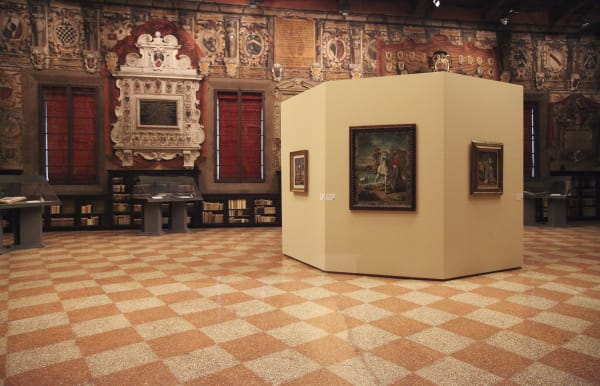Giorgio De Chirico (1888-1978) is certainly the Italian artist of the twentieth century who has distanced himself the most from "natural reality": with firm awareness, he protects art from contingency, places it outside the time and space of sensitive experience, captures its enigmatic immobility, its incongruence with social transformations, opting for a sort of disturbing classicism built on the cultural stratification of myths and models. Its nature is always a cultural landscape and books, like pictorial archetypes, are the metaphysical enchantment of another reality that is always present, not conditioned by presumed revolutions and not subjected - as the Avant-gardes are instead - to historical events to be predicted or directed in an auxiliary way towards a political project. The selection of works presented in the Stabat Mater Hall of the Archiginnasio in Bologna intends to be exemplary in emphasizing these aspects of De Chirico's poetics, taking advantage of the exhibition context. The works, placed at the center of an essential geometric structure, are representative of the main themes dear to the artist and, together, constitute a prism with which to address the surrounding space to recognize the cultural density of an incomparable place, which seems miraculously removed from secular events.
The paintings are accompanied by an exceptional counterpoint: some treasures of the Library, that is, historical volumes of extraordinary importance, have been selected so as to recognize - in the open pages and presented with didactic passion in showcases - some iconographic models and cultural references that seem to dialogue with the paintings, confirming De Chirico's classical imagery and the foundations of a metaphysics that, in its evident aspiration to the dimension of "myth", is also to be recognized as meta-history.
Among these are the Polifilo printed by Aldo Manuzio in 1499, the Imprese by Andrea Alciati of 1551, the five books of the Symbolicarum quaestionum by Achille Bocchi of 1555, the Antichità romane by Giambattista Piranesi of 1756.
The taste for the ancient, the charm of the archaeological décor, the enigmatic character of the fragment, the reinterpretation of the classical image find extraordinary correspondences in these refined graphic repertoires put into circulation by the art of printing. The illustrations present in the volumes exhibited were chosen above all to convey the emotion of the dialogue with the painting of ideas and the poetic and iconic evocation of the ancient world and its mysteries by De Chirico pictor classicus who, in his self-portrait of 1911, painted the inscription: ET QUID AMABO NISI QUOD AENIGMA EST?
Giorgio De Chirico e i libri: Archiginnasio, Bologna
Past event
Archiginnasio, Bologna



